How to Wash Jeans: The Ultimate Denim Care Guide
Jeans are a wardrobe staple, loved for their versatility and ability to be dressed up or down. From casual Fridays to weekend outings, a good pair of jeans can be a go-to choice. However, the very thing that makes them so popular – their durability and unique fading patterns – can also be compromised by improper washing.
Many people experience the disappointment of their favorite jeans fading, shrinking, or becoming damaged too soon. The goal with this article is to present to readers is how to protect their investment. This comprehensive guide will offer readers all the necessary knowledge to properly care for their denim.
This includes understanding different types of denim, mastering both machine and hand-washing techniques, tackling stubborn stains, and learning how to prevent odor. Following these tips will protect your favorite jeans, keeping them looking great and lasting for years.
1. Understanding your jeans: Different types of denim
Not all jeans are created equal. The world of denim offers a variety of fabrics, each with its own characteristics and care requirements. Knowing the type of denim helps people choose the best washing approach, ensuring that jeans remain looking great.
1.1 Raw denim
Raw denim is the purest form of denim. It’s unwashed and untreated, meaning it hasn’t gone through any pre-washing or distressing processes after being dyed. This gives it a stiff feel and a deep indigo color. The beauty of raw denim lies in its ability to develop unique fades and creases over time, personalized to the wearer’s body and habits.
Because of its untreated nature, washing raw denim requires extra care. To maintain its unique characteristics, minimize washing. Many raw denim enthusiasts go months, or even years, between washes. When washing is needed, hand washing is the best approach.
1.2 Dark wash denim
Dark wash denim has been washed, but only lightly, to soften the fabric while maintaining a rich, dark color. These jeans are a popular choice for those who want a more polished look than raw denim but still appreciate a deep indigo hue. The primary concern with dark wash jeans is color retention. Washing inside out and using cold water is crucial to prevent premature fading.
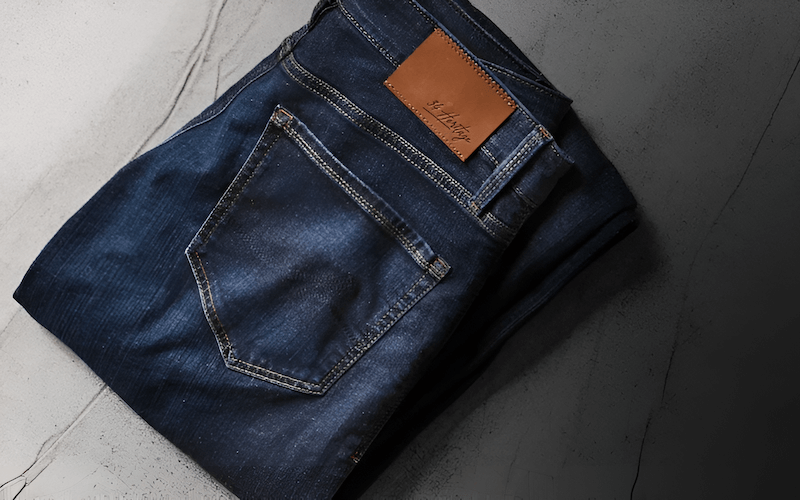
1.3 Light wash denim
Light wash denim has undergone a more extensive washing process, resulting in a lighter, faded blue color. These jeans offer a more casual, lived-in look. While fading is less of a concern with light wash denim, proper washing is still important for general cleaning and removing any stains that may occur.

1.4 White denim
White denim offers a crisp, clean look, perfect for warmer weather or a more dressed-up style. The biggest challenge with white denim is preventing yellowing or discoloration. Careful washing and avoiding contact with colored items are key. Using bleach approached. Diluted bleach can be used sparingly for stubborn stains, but it’s always best to test it on an inconspicuous area first.
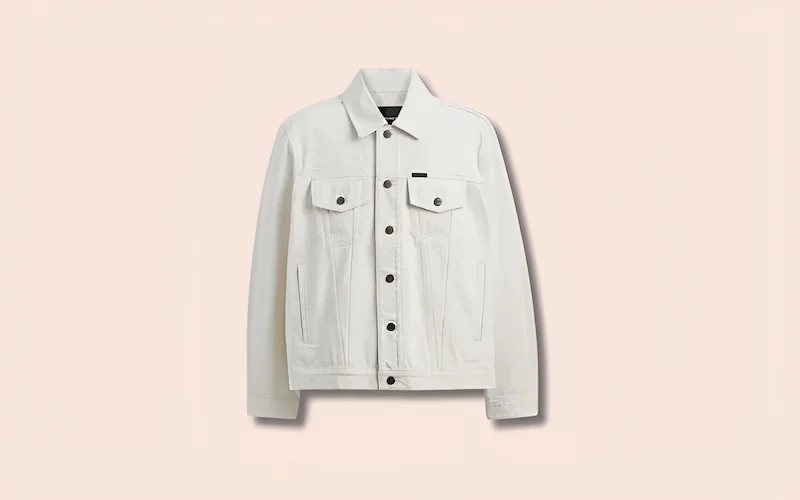
1.5 Stretch denim
Stretch denim incorporates elastic fibers, like elastane or spandex, into the cotton weave. This gives the jeans added flexibility and comfort, making them easier to move in. The care instructions are similar to regular denim.

1.6 Selvedge denim
Selvedge denim refers to the finished edge of the fabric, which prevents it from unraveling. It’s often associated with higher-quality denim and is identifiable by a clean, often colored stripe along the outseam when the jeans are cuffed. The same care applies here as with other types of denim, though selvedge denim is also often raw.
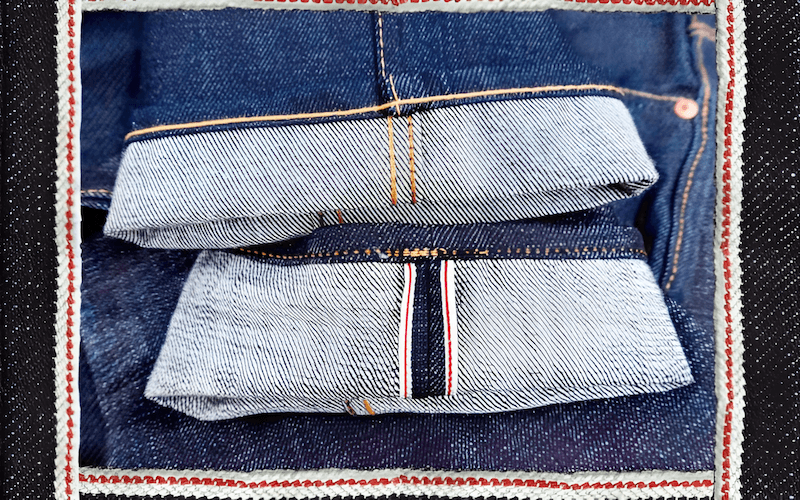
2. Preparing to wash your jeans
Before even thinking about turning on the washing machine or filling the tub, taking a few preparatory steps can significantly impact the outcome of the wash and the longevity of your jeans.
2.1 Read the care label
Every garment comes with a care label, and it’s there for a reason. The manufacturer provides specific instructions tailored to the particular fabric and construction of the jeans. Always check the care label before washing. It will indicate the recommended water temperature, washing method, and drying instructions. Ignoring these guidelines could lead to irreversible damage, such as shrinking, fading, or warping.
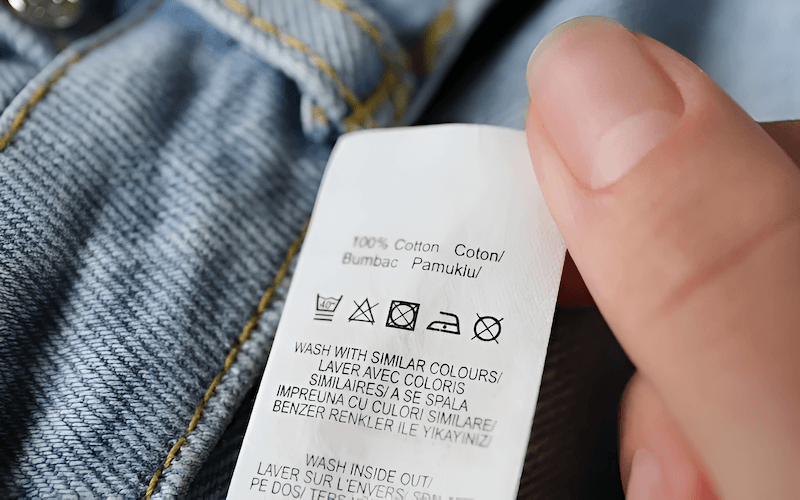
2.2 Check for stains
Pre-treating stains before washing is crucial for maximizing stain removal. Different stains require different treatments, so identifying the type of stain is the first step. Once identified, apply an appropriate stain remover or a homemade solution (more on this later) to the affected area before washing the entire garment. This gives the stain remover time to work and prevents the stain from setting further during the wash cycle.
2.3 Empty pockets and turn inside out
This simple step is often overlooked, but it’s essential for protecting jeans. Emptying pockets prevents items like coins, keys, or pens from damaging the fabric or the washing machine. Turning jeans inside out protects the outer surface, which is most susceptible to fading and abrasion during washing. By exposing the inside of the jeans to the brunt of the washing process, the outer color and finish are preserved.
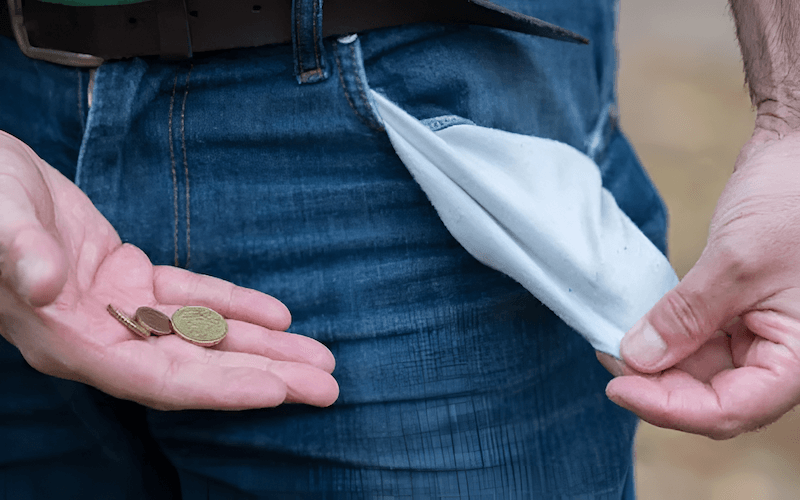
Zipping up zippers and buttoning buttons helps the jeans maintain their shape during the wash. It also prevents the zippers and buttons from snagging on other items in the wash, potentially causing damage.
3. How to machine wash jeans
While hand-washing is often recommended for certain types of denim (like raw denim), machine washing is a convenient and effective option for most jeans, provided the right steps are followed.
3.1 Choosing the right detergent
The detergent used can significantly impact the color and longevity of jeans. Harsh chemicals and strong detergents can strip the dye, leading to premature fading. Opt for a mild detergent specifically formulated for delicate fabrics or dark colors.
Some excellent choices include Tide Free & Gentle, The Laundress Darks Detergent, and Mrs. Meyer’s Clean Day Laundry Detergent. Fabric softeners should be avoided. They can leave a residue on denim that affects its texture and may even interfere with the fabric’s breathability.
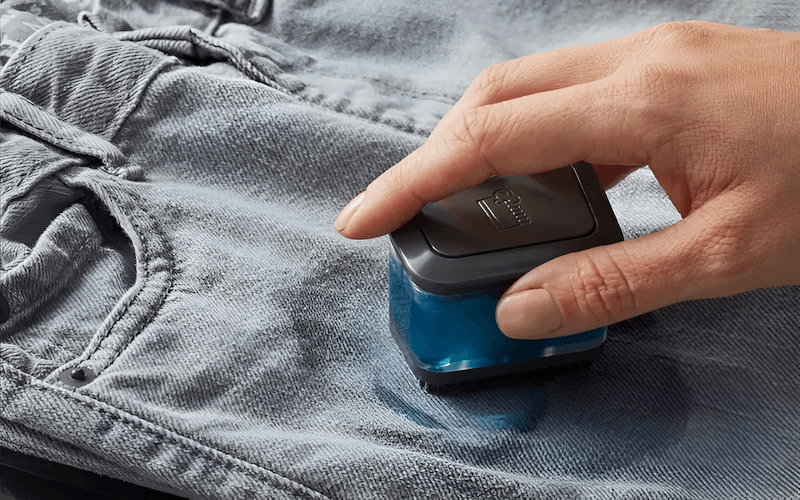
3.2 Setting your washing machine
The correct washing machine settings are crucial for protecting jeans. Always use cold water. Hot water can cause shrinkage, especially in cotton-rich denim, and it accelerates fading. Select the delicate or gentle cycle.
This cycle uses less agitation, reducing the stress on the fabric. Choose a low spin speed. High spin speeds can wrinkle and distort the fabric. Ensure the water level is appropriate for the load size. The jeans should be able to move freely in the water.
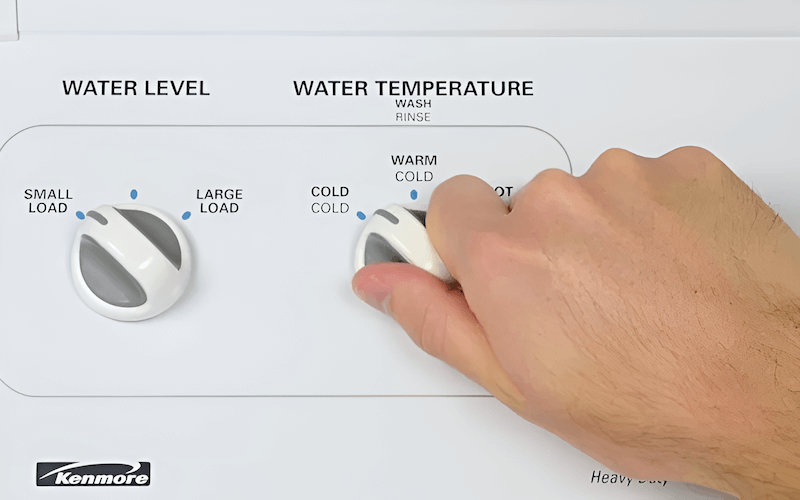
3.3 Washing with similar colors
Washing jeans with similar colors, especially dark wash jeans, is important to prevent dye transfer. Darker dyes can bleed onto lighter fabrics, causing unwanted discoloration. Washing dark jeans with other dark clothing, and light jeans with other light-colored items, minimizes this risk.
3.4 Don’t overload the machine
Avoid overloading the washing machine. Jeans need enough space to move freely in the water for proper cleaning and to minimize friction and abrasion. Overloading can lead to uneven cleaning and increased wear and tear on the fabric.
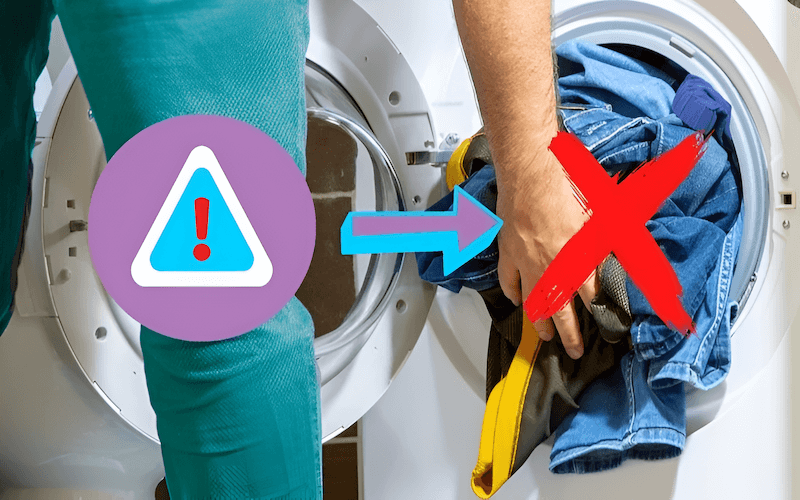
4. How to hand wash jeans
Hand washing is the gentlest method for cleaning jeans and is particularly recommended for raw denim or delicate, embellished jeans. It allows for more control over the washing process, minimizing the risk of damage.
4.1 Fill a tub or basin
Use a clean bathtub, large sink, or basin. Fill it with cold water. Add a small amount of mild detergent – about ½ capful or a tablespoon, depending on the detergent’s concentration and the size of the tub. Swirl the water gently to distribute the detergent.
4.2 Submerge and soak
Submerge the jeans (turned inside out) in the soapy water. Ensure they are fully immersed. Allow them to soak for 15-30 minutes. This allows the detergent to penetrate the fabric and loosen dirt and grime.
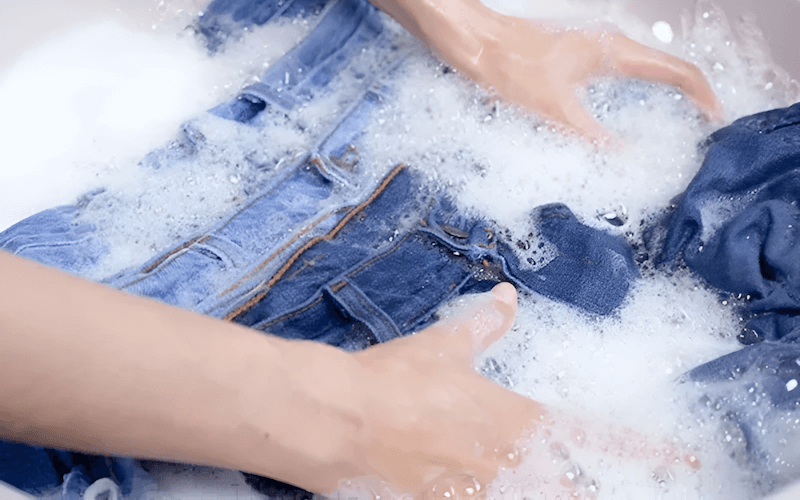
4.3 Gently agitate
After soaking, gently agitate the jeans in the water. Use your hands to move the fabric back and forth, mimicking the action of a washing machine, but with much less force. Avoid harsh scrubbing or twisting, as this can damage the fibers and distort the shape of the jeans. Focus on areas that are particularly soiled.
4.4 Rinse thoroughly
Drain the soapy water from the tub or basin. Refill it with clean, cold water. Submerge the jeans and gently agitate them again to rinse away all traces of detergent. Repeat this process until the water runs clear and no suds remain. Detergent residue can stiffen the fabric and dull the color.
4.5 Squeeze (Don’t twist)
Avoid twisting or wringing out the jeans to remove excess water. This can damage the fibers and cause the jeans to lose their shape. Instead, gently squeeze the water out, starting from the top and working your way down. You can also roll the jeans in a clean, absorbent towel to remove more moisture.
5. Drying your jeans: Air drying is best
Air drying is the best method for drying jeans. It’s the gentlest approach, minimizing shrinkage, preserving the fabric’s integrity, and preventing the fading that can occur with high heat.
5.1 Hang to dry
Hang the jeans (still inside out) to dry. An accordion-style drying rack is a good choice, as it allows for good air circulation around the garment. If hanging outdoors, choose a shaded area.
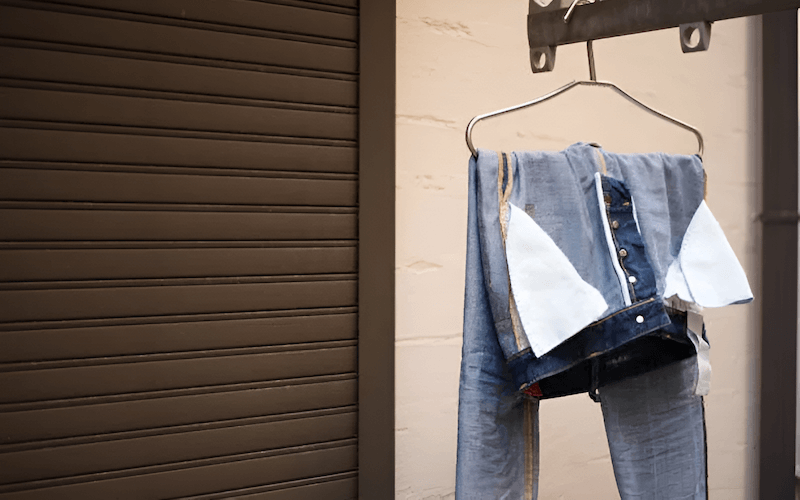
5.2 Avoid direct sunlight
Direct sunlight can cause significant fading, especially in darker-colored jeans. The ultraviolet (UV) rays in sunlight break down the dye molecules, leading to a loss of color.
5.3 Can you use a dryer? (sparingly)
While air drying is strongly recommended, a dryer can be used if absolutely necessary, such as in situations where time is limited or air drying isn’t feasible. However, it’s crucial to use the lowest heat setting possible and a short cycle. Remove the jeans while they are still slightly damp. This prevents over-drying, which can lead to shrinkage and damage the fabric. Over-drying can also make the jeans feel stiff and uncomfortable.
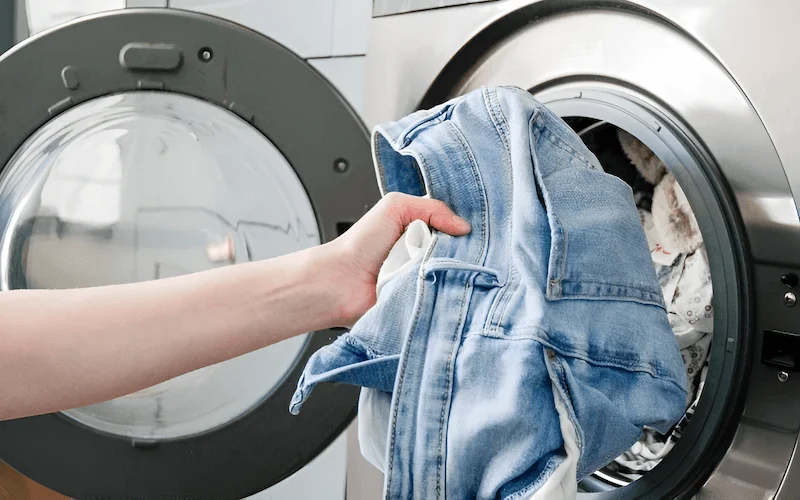
6. Stain removal for jeans
Accidents happen, and jeans are often the victims of spills and stains. Knowing how to effectively remove stains can save a favorite pair of jeans from being relegated to the back of the closet.
6.1 General stain removal tips
Before tackling any specific stain, there are a few general principles to keep in mind:
- Act Quickly: The sooner a stain is treated, the better the chances of complete removal. Fresh stains are easier to lift than those that have had time to set.
- Blot, Don’t Rub: Rubbing a stain can spread it further and damage the fabric fibers. Instead, gently blot the stain with a clean cloth or paper towel to absorb as much of the spill as possible.
- Test First: Before applying any cleaning solution to the stain, test it on an inconspicuous area of the jeans, such as the inside of the hem or waistband. This ensures that the cleaning agent won’t damage the fabric or cause discoloration.
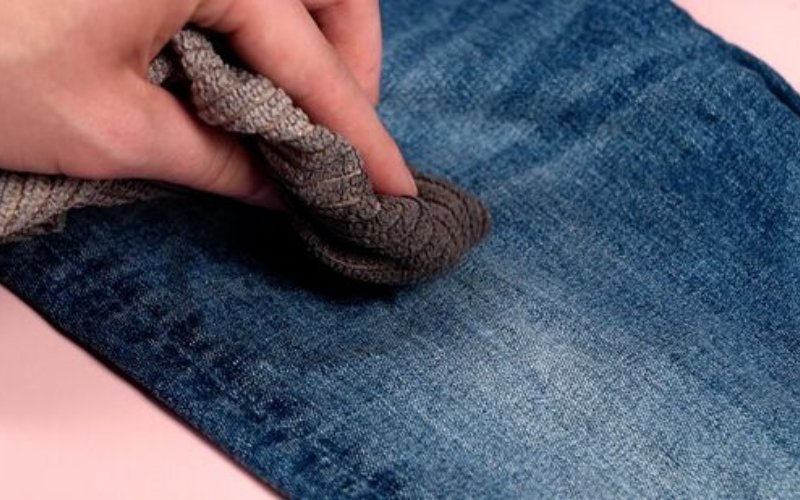
6.2 Specific stain treatments
Different stains require different approaches. Here are some common stains and how to treat them:
- Oil/Grease: Sprinkle baking soda or cornstarch on the stain to absorb the oil. Let it sit for at least 30 minutes, then brush it away. Apply a small amount of dish soap (which is designed to cut grease) to the stain and gently work it in with your fingers or a soft brush. Rinse with cold water.
- Ink: Apply rubbing alcohol or hairspray (which often contains alcohol) to the stain. Blot with a clean cloth, repeating until the ink is gone. Rinse with cold water.
- Blood: Immediately rinse the stain with cold water. Never use hot water, as it will set the stain. If the stain persists, apply a small amount of hydrogen peroxide to the area and blot. Rinse with cold water.
- Grass: Apply an enzyme detergent or a mixture of vinegar and water to the stain. Let it sit for 15-30 minutes, then gently scrub with a soft brush. Rinse with cold water.
- Red Wine: Immediately blot the stain with a clean cloth to absorb as much wine as possible. Sprinkle salt liberally over the stain to absorb more liquid. Let it sit for at least an hour, then brush away the salt. If the stain persists, pour boiling water over the stain (from a safe height) or apply a specialized red wine stain remover.
7. How often should you wash your jeans?
The general consensus among denim experts is to wash jeans as little as possible. Over-washing can lead to fading, shrinkage, and a loss of the fabric’s unique characteristics. A good guideline is to wash jeans every 2-6 wears, or even longer, depending on individual circumstances.
Several factors influence how often jeans need to be washed:
- Visible Dirt or Stains: If jeans are visibly dirty or stained, they should be washed, regardless of how many times they’ve been worn.
- Odor: If jeans develop an unpleasant odor, it’s time for a wash.
- Activity Level: Jeans worn during strenuous activities or in environments where they are exposed to dirt, sweat, or odors will need to be washed more frequently than jeans worn for more sedentary activities.
- Spot Cleaning: This will be a useful method instead of washing the entire pants.
8. Odor prevention and removal
Keeping jeans smelling fresh between washes is key to extending their lifespan and minimizing the need for frequent washing.
Here are some practical tips for preventing and removing odors:
- Air Them Out: After wearing jeans, hang them in a well-ventilated area, preferably near an open window or outdoors (avoiding direct sunlight). This allows air to circulate around the fabric, helping to dissipate any lingering odors.
- DIY Fabric Refresher: Create a simple fabric refresher spray by mixing:
- 1 cup of water
- 1/4 cup of white vinegar
- 10-15 drops of essential oil (lavender, lemon, or tea tree oil are good choices for their antibacterial and refreshing properties)
Pour the mixture into a spray bottle and lightly mist the jeans, avoiding soaking the fabric. The vinegar helps to neutralize odors, while the essential oil adds a pleasant scent.
- Avoid storing dirty jeans: Dirty jeans will make the smell worse.

9. Common mistakes to avoid when washing jeans
To summarize the best practices for washing jeans, here’s a list of common mistakes to avoid:
- Using Hot Water: Hot water can shrink and fade denim. Always use cold water.
- Using Harsh Detergents: Harsh chemicals can strip the dye and damage the fibers. Opt for a mild detergent.
- Using Fabric Softeners: Fabric softeners can leave a residue that affects the texture and breathability of denim.
- Over-Washing: Washing jeans too frequently can lead to premature wear and tear. Wash only when necessary.
- Over-Drying: High heat in the dryer can shrink and damage denim. Air dry whenever possible.
- Washing with Different Colors: Dark jeans can bleed dye onto lighter fabrics. Wash with similar colors.
- Rubbing Stains Vigorously: Rubbing can spread stains and damage the fabric. Blot gently instead.
- Ignoring the Care Label: The care label provides specific instructions from the manufacturer. Always check it first.
- Twisting or Wringing Jeans: This can distort the shape and damage the fibers. Squeeze gently to remove excess water.
Read more: Hot And Cold Water Wash: Best Laundry Washing Choice?
10. Related questions
10.1 Can I freeze my jeans to clean them?
Freezing jeans is a popular myth, but it doesn’t actually clean them. While freezing may kill some odor-causing bacteria, it won’t remove dirt, stains, or body oils. Washing is still necessary for proper cleaning.
10.2 Is it better to dry clean jeans?
Dry cleaning is generally not necessary for most jeans and may even be harmful to some denim fabrics. The chemicals used in dry cleaning can be harsh and may cause discoloration or damage. Hand washing or machine washing on a delicate cycle with cold water is usually a better option. However, for very expensive or embellished jeans, dry cleaning might be considered, but always check the care label first.
10.3 Should I iron my jeans?
Ironing jeans is generally not necessary, and the high heat can damage the fibers, especially if the jeans contain any stretch material. If you want to remove wrinkles, hanging the jeans to dry or using a steamer is a gentler alternative. If you must iron, use a low heat setting and iron the jeans inside out.
Read more:
Properly caring for jeans is an investment in their longevity and appearance. By understanding the different types of denim, following the recommended washing and drying techniques, and addressing stains and odors effectively, people can keep their favorite jeans looking great for years to come.
Remember, washing jeans less frequently, using cold water and mild detergents, and air drying are key to preserving their color, fit, and overall quality. Embrace these practices, and your denim will reward you with lasting style and comfort.
Visit our website https://mypacklove.com/ to explore our product options and request a quote. Contact us today to discuss your specific needs! Let us help you enhance your clothing care and branding efforts.






















